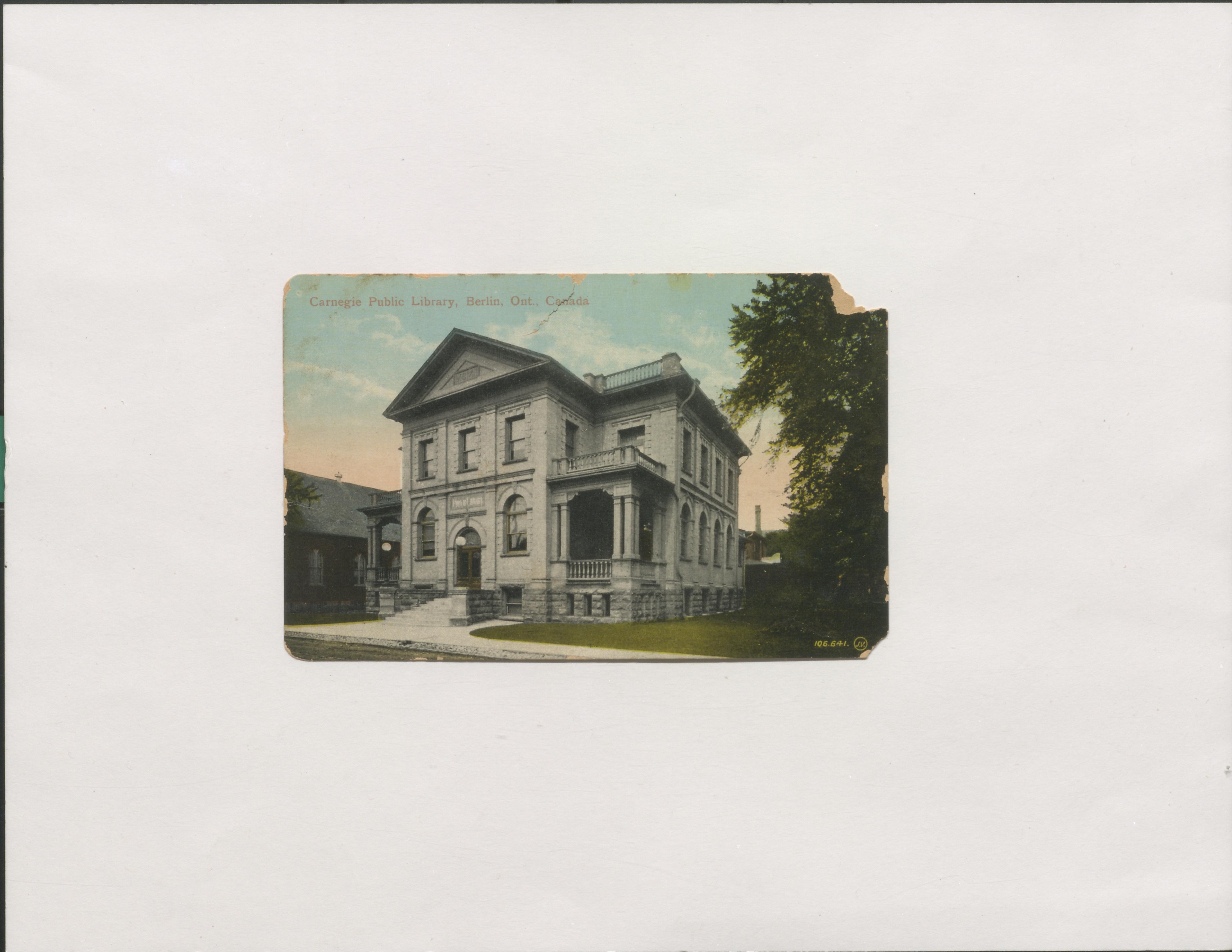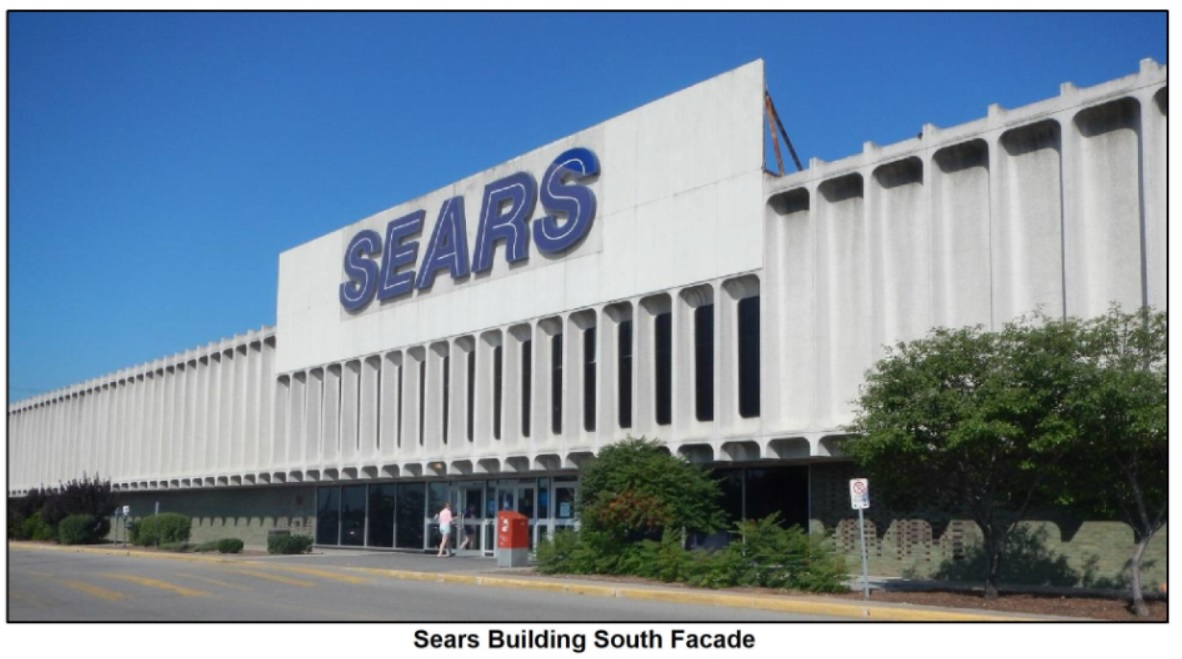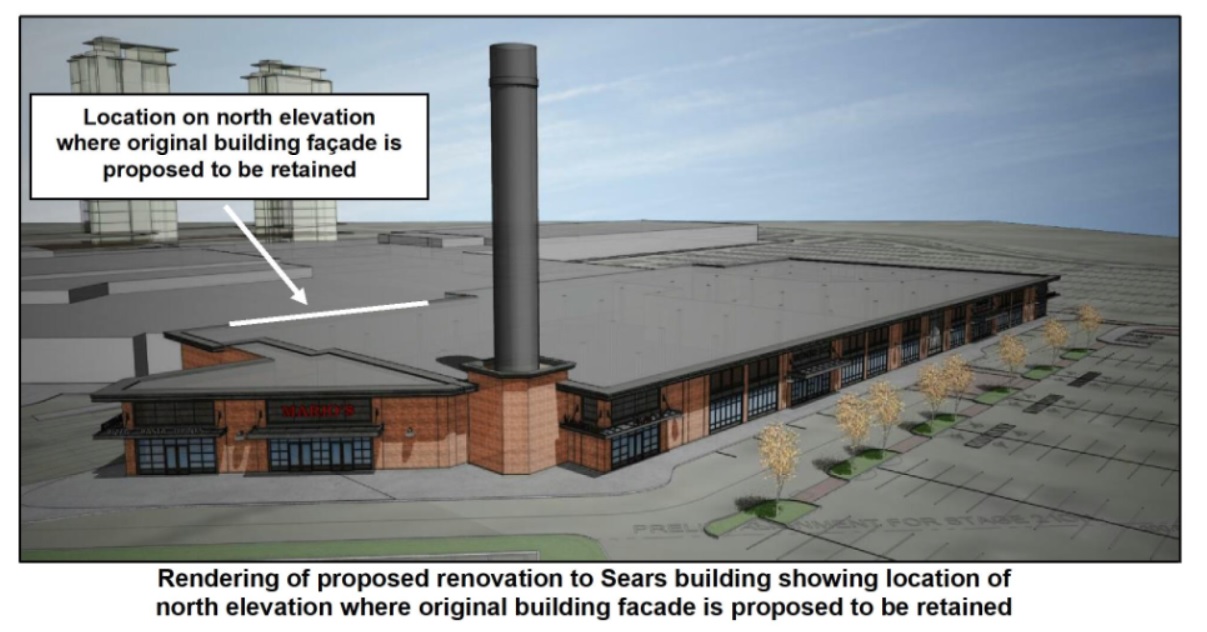 Post card of the Kitchener Public Library, demolished in 1963. Photo courtesy of the Kitchener Public Library.
Post card of the Kitchener Public Library, demolished in 1963. Photo courtesy of the Kitchener Public Library.
The ACO North Waterloo Region Branch recently held the first of a series on the Carnegie Libraries in the Region of Waterloo. Our first presentation was by Erin Smith: “Andrew Carnegie’s Gift to the Region: understanding the eight Carnegie Libraries of Waterloo Region.” Below are some details of the talk, including the slides that were presented. We hope to be able to have slides available for future talks that we sponsor.
The Talk
The talk began with an overview of the Carnegie libraries funding program, then focused on the eight Carnegie funded libraries in Waterloo Region, seven of which are still standing, three of those still used as libraries.
Smith explained the Carnegie library model came at a transitional time in North America, and Ontario specifically, when a new physical structure for our libraries offered an answer to the challenge of defining how a library should look and function. They accelerated the movement toward a standardization for libraries at the time.
Waterloo Region is interesting, said Smith, because the period when the area’s Carnegie libraries were funded and built, between 1902 and 1922, offers a comprehensive representation of Carnegie libraries over time, covering the entire period of Carnegie’s grant program in Canada.
The Speaker
Erin Smith is a heritage planner with the City of Brampton who has a Masters in Historic Preservation from the University of Texas School of Architecture where she began her research into Carnegie libraries. She has local experience as she studied urban planning at the University of Waterloo and worked several summers at the Region of Waterloo in their heritage planning section. Her recent thesis research focused on monitoring how heritage properties have been redeveloped along Waterloo Region’s ION Rapid Transit System. Her Instagram posts can be found at @alovelettertolocales.
A self-proclaimed Carnegie libraries ‘geek’, Smith’s presentation, Andrew Carnegie’s Gift to the Region: understanding the eight Carnegie Libraries of Waterloo Region, began with an overview of the Carnegie libraries funding program, then focused on the eight Carnegiefunded libraries in Waterloo Region, seven of which are still standing, three of those still used as libraries.
Click on the link below for her slides. A new window will open and you can see the more than 80 slides she presented.


